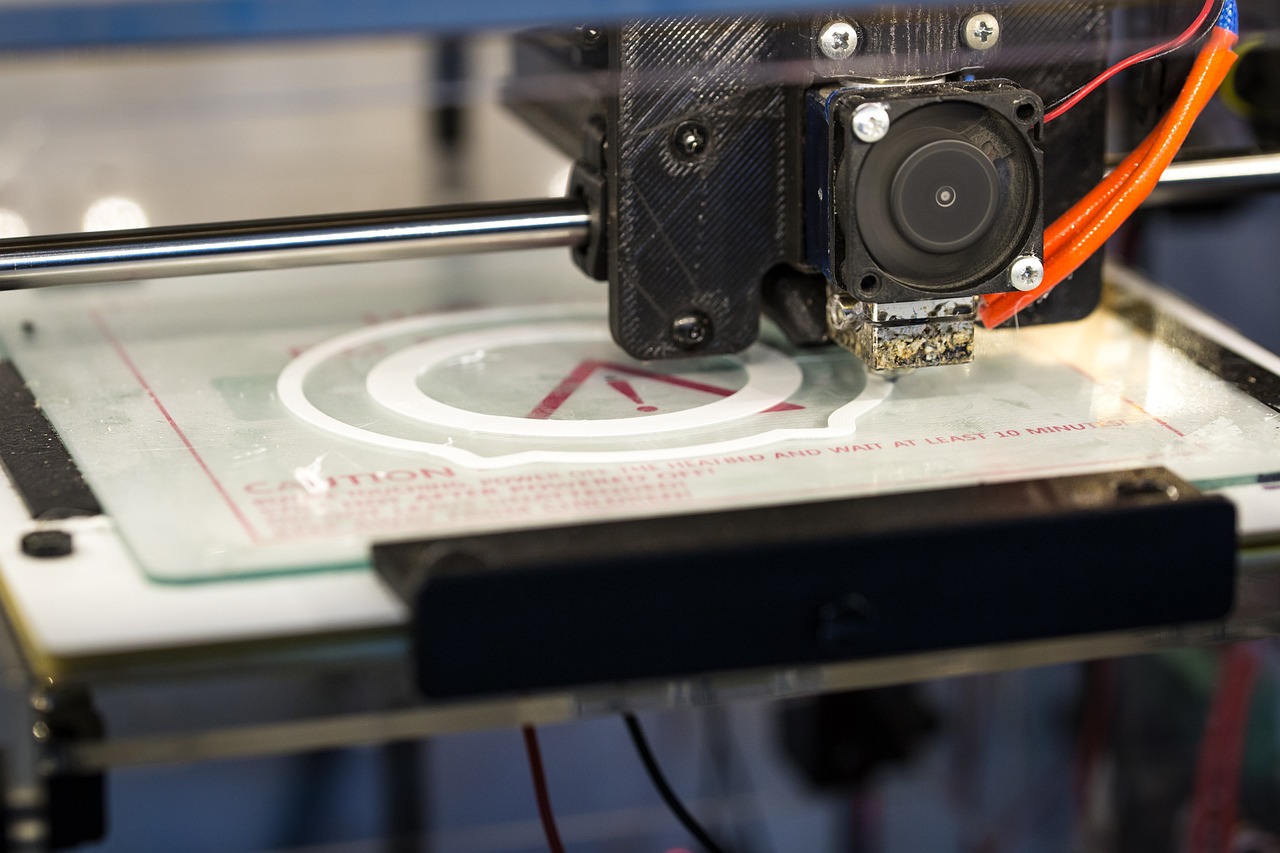Technology stands as the cornerstone of modern innovation, fundamentally transforming how visionaries and entrepreneurs approach problem-solving and value creation. According to a comprehensive study by McKinsey, organizations that effectively leverage emerging technologies are 2.5 times more likely to be industry leaders than their counterparts. In an era of rapid technological advancement, the fusion of cutting-edge tools and innovative thinking has become essential for staying competitive and driving meaningful change.
Enabling Innovation through Cutting-Edge Technologies
The convergence of advanced technologies has created unprecedented opportunities for innovators to push boundaries and reimagine possibilities. Digital transformation has become more than just a buzzword – it’s the driving force behind breakthrough innovations across industries. Modern innovators must navigate an increasingly complex technological landscape while leveraging these tools to create sustainable, scalable solutions.
The Impact of Artificial Intelligence on Innovation
Artificial Intelligence has revolutionized how innovators approach complex challenges. Machine learning algorithms now enable unprecedented capabilities in various domains, transforming how businesses operate and innovate.
| AI Application | Impact on Innovation | Industry Example |
|---|---|---|
| Predictive Analytics | 85% improvement in forecasting accuracy | Healthcare diagnostics |
| Natural Language Processing | 70% reduction in customer service response time | Financial services |
| Computer Vision | 90% increase in quality control precision | Manufacturing |
| Generative AI | 60% faster product design iterations | Creative industries |
| Deep Learning | 75% enhanced pattern recognition | Scientific research |
| Autonomous Systems | 80% improved operational efficiency | Transportation |
Companies leveraging AI for innovation report a 40% increase in operational efficiency and a 35% reduction in development costs. The technology enables rapid prototyping, automated testing, and data-driven decision-making that would be impossible through traditional means. Additionally, AI-powered tools are democratizing innovation by making sophisticated capabilities accessible to smaller organizations and individual innovators.
Harnessing the Power of Big Data for Strategic Decisions
Big data analytics has become instrumental in driving strategic innovation. According to research published by The Guardian, organizations utilizing big data analytics experience significant improvements across multiple dimensions:
- A 23% increase in customer satisfaction through personalized experiences
- 32% improvement in product development success rates
- 45% reduction in time-to-market for new innovations
- 38% enhancement in competitive intelligence accuracy
- 42% better resource allocation efficiency
- 28% increase in market share within their respective industries
- 35% reduction in operational costs through optimized processes
- 50% improvement in risk assessment and management
The ability to process and analyze vast amounts of data has transformed how innovators understand market needs, identify opportunities, and develop solutions. Real-time analytics capabilities enable rapid iteration and continuous improvement of products and services.
Facilitating Collaboration and Connectivity
Cloud Computing for Seamless Collaboration
Cloud infrastructure has transformed collaborative innovation by breaking down geographical barriers and enabling seamless teamwork across organizations and borders.
| Feature | Benefit | Adoption Rate | Impact on Innovation |
|---|---|---|---|
| Real-time Document Collaboration | 75% faster project completion | 85% | Enhanced team creativity |
| Virtual Workspaces | 60% increase in team productivity | 78% | Improved knowledge sharing |
| Cross-border Development | 50% reduction in communication barriers | 92% | Global talent access |
| Scalable Computing Resources | 40% cost savings in IT infrastructure | 88% | Faster prototyping |
| Automated Backup Systems | 99.9% data reliability | 95% | Reduced risk in innovation |
| Integration Capabilities | 65% faster system deployment | 82% | Accelerated development |
Cloud computing has also democratized access to sophisticated development tools and computing resources, enabling startups and individual innovators to compete with larger organizations on a more level playing field.
Internet of Things (IoT) and its Role in Innovation
The IoT ecosystem has created a new paradigm for data collection and system optimization. Smart devices generate over 2.5 quintillion bytes of data daily, providing innovators with unprecedented insights into user behavior and system performance. This massive data ecosystem enables:
- Real-time monitoring and optimization of systems
- Predictive maintenance and resource management
- Enhanced user experience through personalization
- Improved environmental and sustainability outcomes
- Better understanding of product usage patterns
- Development of new service-based business models
Accelerating Product Development and Prototyping

3D Printing and Rapid Prototyping
Additive manufacturing has revolutionized the product development lifecycle by enabling rapid iteration and customization. The technology has transformed traditional manufacturing approaches with significant benefits:
- Reduced prototyping costs by up to 70%
- Decreased time-to-market by 55%
- Enabled mass customization at scale
- Minimized material waste by 35%
- Improved design flexibility and innovation
- Enhanced product testing capabilities
- Reduced inventory and warehousing needs
- Enabled on-demand manufacturing
Digital Twins for Innovation Acceleration
Digital twin technology creates virtual replicas that enable sophisticated simulation and testing capabilities:
| Application | Business Impact | Industry Implementation | Key Benefits |
|---|---|---|---|
| Product Testing | 65% faster validation | Automotive | Reduced development risks |
| System Optimization | 45% efficiency improvement | Manufacturing | Enhanced performance |
| Predictive Maintenance | 30% cost reduction | Aerospace | Improved reliability |
| Risk Assessment | 50% better accuracy | Infrastructure | Better decision-making |
| Process Simulation | 40% resource savings | Energy | Optimized operations |
| Design Iteration | 55% faster development | Architecture | Improved outcomes |
Unlocking Global Market Potential
E-Commerce and Global Reach
Digital commerce platforms have democratized market access and transformed how innovations reach consumers. Key developments include:
- Advanced payment processing systems
- AI-powered customer service solutions
- Personalized shopping experiences
- Sophisticated supply chain management
- Cross-border trade facilitation
- Digital marketing automation
- Customer behavior analytics
- Inventory optimization systems
Blockchain and Global Supply Chain Transparency
Blockchain technology has introduced unprecedented levels of security and transparency:
| Feature | Impact | Implementation Example | Future Potential |
|---|---|---|---|
| Transaction Security | 99.9% reduction in fraud | Financial services | Enhanced trust |
| Supply Chain Visibility | 70% improvement in traceability | Logistics | Better compliance |
| Smart Contracts | 85% faster settlement times | Legal tech | Automated execution |
| Data Integrity | 100% immutable record-keeping | Healthcare | Improved accuracy |
| Asset Tracking | 60% better efficiency | Manufacturing | Reduced losses |
| Identity Management | 90% enhanced security | Government | Stronger privacy |
Fostering Agility and Adaptability

Cloud-Based Project Management Tools
Agile methodologies supported by digital tools have transformed project management and innovation processes:
- 40% faster project delivery times
- 35% improved team collaboration efficiency
- 50% better resource allocation
- 45% increased stakeholder satisfaction
- 55% enhanced risk management
- 30% reduced project costs
- 60% better change management
- 25% improved project success rates
Automation for Speed and Efficiency
Process automation has transformed operational efficiency through various technologies:
| Automation Type | Efficiency Gain | Cost Reduction | Implementation Complexity |
|---|---|---|---|
| RPA | 65% faster processing | 40% | Medium |
| Workflow Automation | 55% reduced errors | 35% | Low |
| AI-powered Analytics | 70% faster insights | 45% | High |
| Smart Scheduling | 40% better resource use | 30% | Medium |
| Document Processing | 75% time savings | 50% | Low |
| Quality Control | 85% improved accuracy | 40% | Medium |
Future-Proofing Innovations with Emerging Technologies
Quantum Computing and its Potential for Innovation
Quantum computing represents the next frontier in computational power, promising revolutionary advances across multiple domains:
- Exponential increases in processing capability
- Revolutionary approaches to encryption
- Breakthrough discoveries in materials science
- Transformative advances in drug development
- Enhanced financial modeling capabilities
- Improved climate change predictions
- Optimized logistics and supply chains
- Advanced artificial intelligence systems
Augmented Reality (AR) and Virtual Reality (VR) for Immersive Experiences
Extended reality technologies are reshaping user experiences and creating new possibilities for innovation:
| Application | User Engagement | Industry Impact | Future Trends |
|---|---|---|---|
| Virtual Training | 75% better retention | Education | Expanded use cases |
| Product Visualization | 60% higher conversion | Retail | Enhanced realism |
| Remote Collaboration | 50% enhanced productivity | Engineering | Greater adoption |
| Customer Experience | 40% increased satisfaction | Entertainment | New platforms |
| Medical Simulation | 80% improved outcomes | Healthcare | Specialized tools |
| Industrial Design | 70% faster prototyping | Manufacturing | Integration with AI |
Technology continues to redefine the boundaries of innovation, providing future-focused leaders with the tools and capabilities needed to drive transformative change. The convergence of AI, IoT, blockchain, and other emerging technologies creates a powerful ecosystem for innovation, enabling faster development cycles, more efficient processes, and unprecedented market reach. As these technologies evolve, they will continue to empower innovators in their quest to solve complex challenges and create sustainable value in an increasingly connected world.
The successful innovators of tomorrow will be those who can effectively harness these technological capabilities while maintaining a clear focus on creating meaningful value for their users and society at large. By embracing these tools and technologies while staying true to core innovation principles, organizations can build sustainable competitive advantages and drive positive change in their respective industries.

